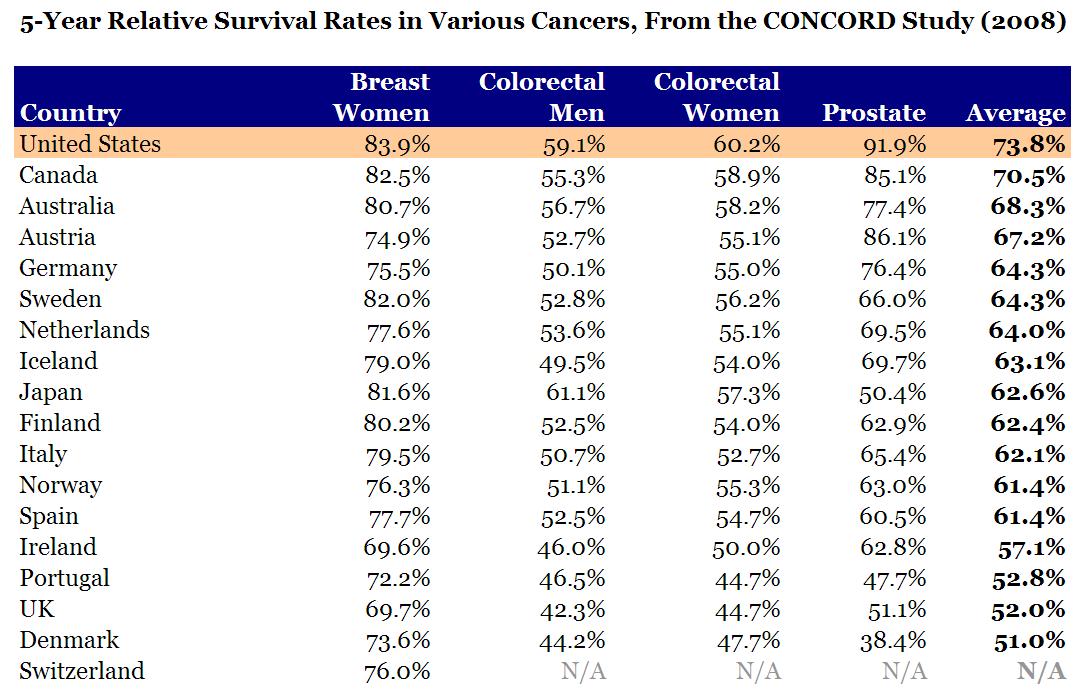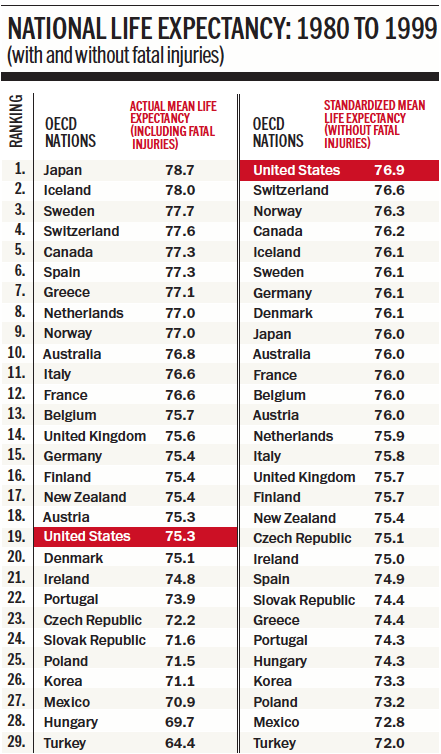When we measure a health care system, are we measuring the right things? For example, consider heart attacks. Is the best measure of a medical care delivery system one where we measure how many people survive a heart attack once it’s happened or is it one where we measure how many people have heart attacks?
I suggest that one measure is a reflection of societal norms. The other medical care delivery.
With that said, do we measure the US system fairly?
It’s not even very close, really. And this plays out to what we know to be true – the world comes to America for medical care, not the other way around.
Sure – move to the ranch in Montana and you have less access to medical care. But is tat the fault of the system or a feature?
But what about life expectancy?
When fatal injuries are removed, which occur before medical care can be applied, the US moves from 19 to [ahem] 1.





